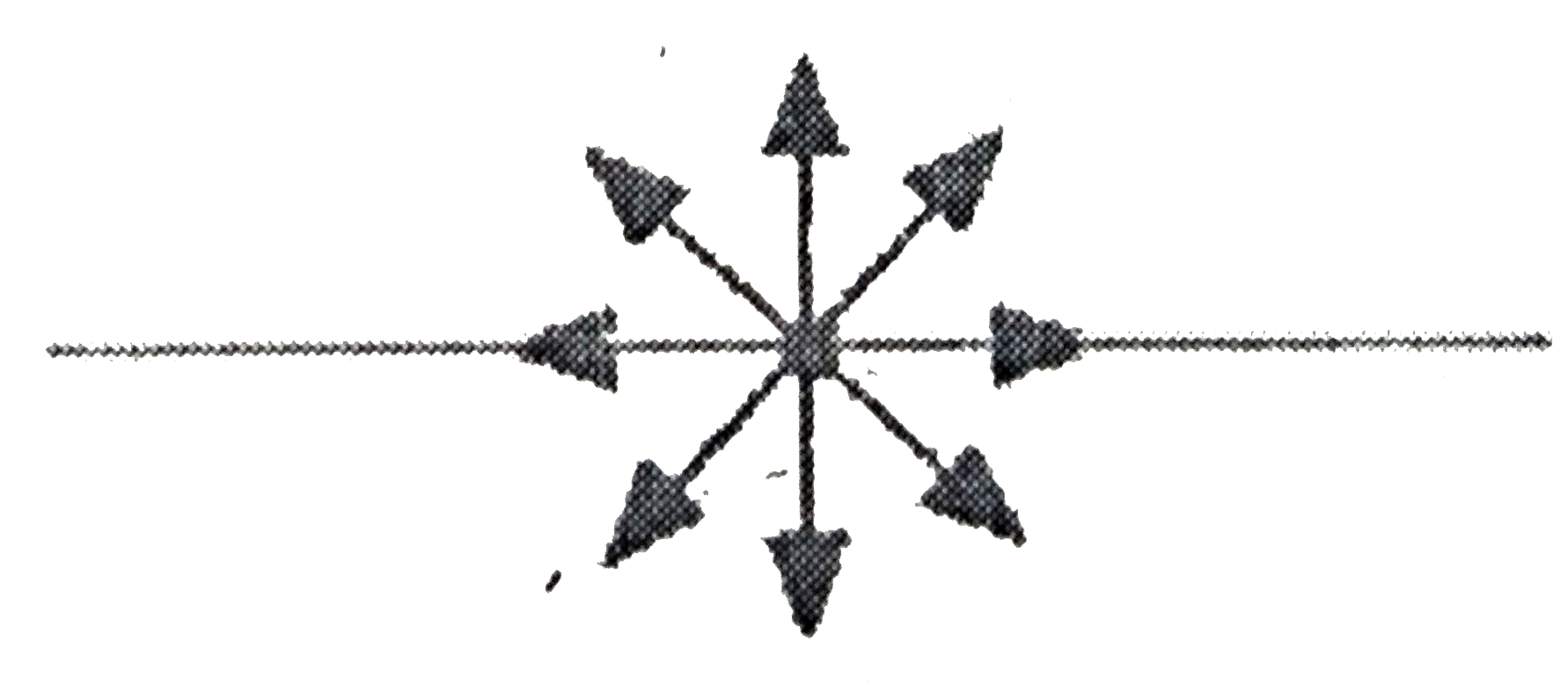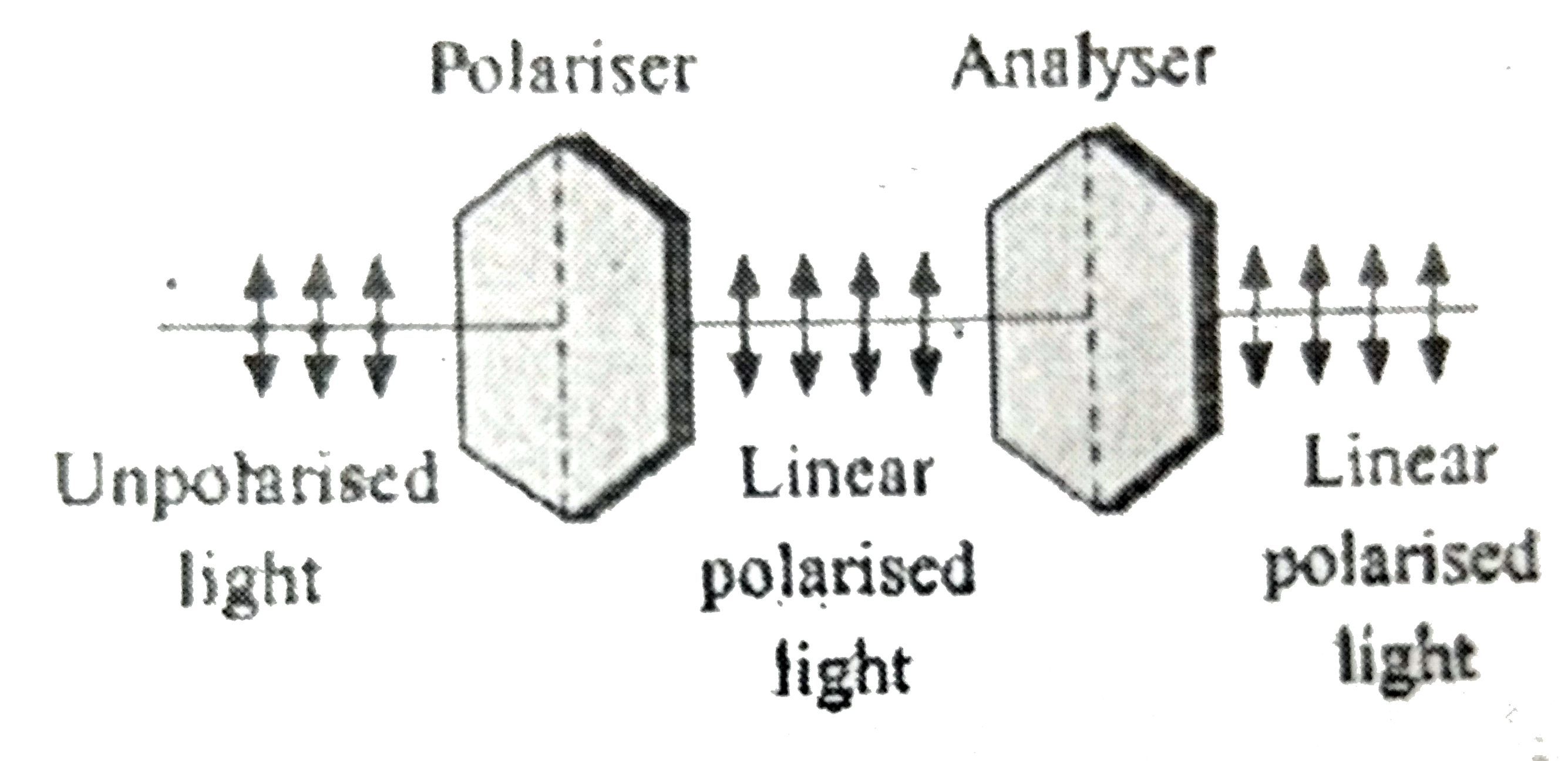(a) Distinguish between unpolarized light and linearly polarized light. How does one get linearly polarised light with the help of a plaroid ?
(b) A narrow beam of unpolarised light of intensity I0 is incident on a polaroid P1. The light transmitted by it is then incident on a second polaroid P2 with its pass axis making angle of 60∘ relative to the pass axis of P1. Find the intensity of the light transmitted by P2.
A light wave in which electric vector oscillates in all possible directions in a plane perpendicular to the direction of propagation is unpolarised light.

If the electric vector vibrationis restricatedto one direction only in a plane perpendicular to the direction of propagation the light is linearly polarised.

● In a polaroid a long chaing of molecules is aligned in a particular direction. The electric vectors (of light waves) along the direction of aligned molecules gets absorbed. An unpolarised light wave incident on such a polaroid gets absorbed. An unpolaried light wave incident on such a polaroid gets linearly plaroised with an electric vector oscillating along a direction perpendicular to the aligned molecules. This direction is called the pass-axis of the polaroid.
(b) After passing from P1, the intensity of the light will be I02 .
Now, after passing through P2, th new intensity of the light will be I02cos2θ.
⇒I=I02cos260∘.
⇒I=I02cos260∘.
I=I02×I4=I08.
Topper's Solved these Questions
- XII BOARDSBOOK - XII BOARDS PREVIOUS YEARCHAPTER - XII BOARDSEXERCISE - SET-II DELHI BOARD (SEC-B)
2 Videos
- XII BOARDSBOOK - XII BOARDS PREVIOUS YEARCHAPTER - XII BOARDSEXERCISE - SET-II DELHI BOARD (SEC-C)
5 Videos
- XII BOARDSBOOK - XII BOARDS PREVIOUS YEARCHAPTER - XII BOARDSEXERCISE - SET-I (SECTION-D)
1 Video
- SAMPLE PAPER 2019BOOK - XII BOARDS PREVIOUS YEARCHAPTER - SAMPLE PAPER 2019EXERCISE - SECTION D
6 Videos
Similar Questions
(a) Distinguish between unpolarized light and linearly polarized light. How does one get linearly polarised light with the help of a plaroid ?
(b) A narrow beam of unpolarised light of intensity I0 is incident on a polaroid P1. The light transmitted by it is then incident on a second polaroid P2 with its pass axis making angle of 60∘ relative to the pass axis of P1. Find the intensity of the light transmitted by P2.
View SolutionDistinguish between unpolarised light and linearly polarised light. How does one get linearly polarised light with the help of a polaroid ?
View Solution
Knowledge Check
When an unpolarized light of intensity I0 is incident on a polarizing sheet, the intensity of the light which does not get transmitted is
AZeroBI0C12I0D14I0When an unpolarised light of intensity I0 is incident on a polarising sheet, the intensity of the light which does not get transmitted is
AzeroBI0C12I0D14I0When an unpolarized light of intensity I0 is incident on a polarizing sheet, the intensity of the light which does not get transmitted is
A12I0B14I0CzeroDI0
(a) Distinguish between unpolarised light and linearly polarised light. How does one get linearly polarised light with the hel of a polaroid ?
(b) A narrow beam of unpolarised light of intensity I0 is incident on a polaroid P1. The light transmitted by it is then incident on a second polaroid P2 with its pass axis making angle of 60∘ relative to the pass axis of P1. find the intensity of the light transmitted by P2.
View SolutionA narrow beam of unpolarised light of intensity I0 is incident on a polaroid P1. The light transmitted by it is then incident on a second polaroid P2 with its pass axis making an angle of 60∘ to the pass axis of P1. Find intensity of light transmitted by P2.
View SolutionA narrow beam of unpolarised light of intensity I0 is incident on a polaroid P1. The light transmitted by it is then incident on a second polaroid P2 with its pass axis making an angle of 60∘ to the pass axis of P1. Find intensity of light transmitted by P2.
View SolutionUnpolarised light of intensity I is incidnet of the polaroid. What will be the intensity of light transmitted by the polaroid?
View SolutionUnpolarised light of intensity I0 is incident on two crossed polaroids. The intensity of light transmitted by the combination will be .............. .
View Solution